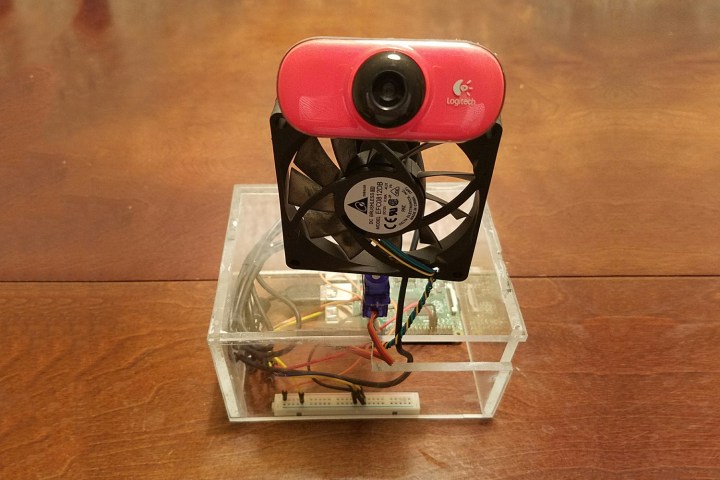
“I guess this is what happens when a software engineer has too much time on his hands,” LaCrosse joked with Digital Trends.
LaCrosse’s cool homemade hack takes advantage of a PC fan and webcam, hooked up to a Raspberry Pi mini PC. “Have you ever wished your fan would follow you around to cool you off on those hot summer days!?” LaCrosse wrote of his creation. “Well I decided to do something about it! Welcome FanBot, the personal desktop fan that follows your face and keeps you cool when things are getting a little too spicy!”
Rather than selfishly keeping his cool gadget to himself, however, LaCrosse decided to post it to DIY website Instructables, where he has made available step-by-step instructions so other people can create their own FanBots.
The project will teach a bit about hardware, as well as face-tracking software using computer vision library openCV, pulse width modulation, and how to control a servo using the general purpose input/output (GPIO) pins on a Raspberry Pi.
That makes it sound rather complex, but LaCrosse is convinced it’s not as scary as it sounds.
“This is something I’d say anyone could create,” he told us. “When I started, I had no Raspberry Pi experience or servo experience or openCV. I just scoured the internet looking for tutorials. I learned on the job as I was piecing it together.”
As for the future, he’s considering putting together a more polished version that’s less of a proof-of-concept. “Right now, though, it’s just open-source,” he said. “I wanted this to be something anyone could download and make for themselves.”
If you want to create a face-tracking fan of your own, you can follow Devin LaCrosse’s instructions by clicking here.


